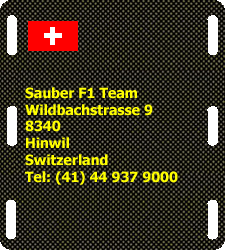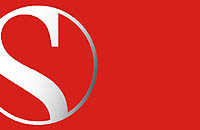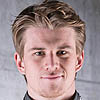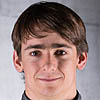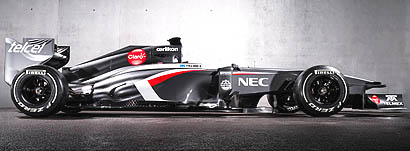|
Peter Sauber established his company in 1970, in his native Switzerland. His first car was a VW-powered sports racer nicknamed the 'Cheesewedge' and he followed that with Group 6 cars powered by 2-litre Cosworth and BMW engines. It was all fairly low profile stuff because, for most of the 1970s, small-capacity sports car racing was not the stuff of headlines. Further, Sauber showed no inclination to build a single-seater (his first open-wheeler was his 1993 F1 car).
Sauber's breakthrough came in 1981 when he created a special version of the BMW M1 which was sold to Dieter Quester who ran it at Le Mans. A second car won the 1981 Nurburgring 1000 kms, driven by Hans Stuck and Nelson Piquet. That was the stuff of headlines and Sauber began to be taken seriously.
A 1982 Group C with a Cosworth DFL engine was underwritten by Walter Brun and entered as a Sauber 'works' car. Like everyone else who used the engine, however, Sauber was overwhelmed by the engine's vibration. In 1983, a BMW-engined Croup C car performed well, and then Sauber turned to a car with a turbocharged Mercedes-Benz engine. This caught the attention of the Mercedes-Benz factory which began to offer Sauber some measure of support.
By 1988 this support had increased to what amounted to Sauber becoming a covert works team and, that year, Sauber-Mercedes was runner-up to Jaguar in the World Sports Prototype Championship of Teams. Sauber did even better in 1989, and took both the title and, crucially, won Le Mans.
Mercedes-Benz then felt that it could come out of hiding and enter its cars under its own name, but Sauber continued as a key element of the team. With the demise of sports car racing, Mercedes-Benz toyed with the idea of entering Formula One. When they finally decided not to, Sauber decided to go it alone.
Sauber had few options since he had a fully equipped and staffed factory and there really was not a lot else to do with them apart from Formula One, if he wished to remain in motor racing at the level he'd become used to. Mercedes-Benz has never been a company to let down faithful servants and when Sauber entered Formula One in 1993, it was with substantial financial and technical support for two years.
Naturally, Sauber did not enter F1 at the top, but it came in at the sharp end of the midfield group and performed impressively for a newcomer. In fact, it was the most impressive debut by a new team for many a long day.
When support from Mercedes-Benz came to its planned end, Sauber found life a lot harder. However help was at end in the shape of Ferrari. Having used Ford power-plants for several seasons Sauber made a massive leap forward in 1997 when they switched to Ferrari power. The Ferrari V10, re-badged as Petronas, has seen the Swiss outfit move further and further up the field seeing them finish fourth in the championship in 2001.
Sadly in 2002 the Swiss outfit was unable to build on the progress made in 2001 and actually allowed itself to be overtaken by Renault. The team retained Nick Heidfeld for a second season and partnered him with Brazilian sensation Felipe Massa.
With both drivers in the points in Brazil things looked promising, while Heidfeld produced one of the drives of the season in Spain to finish fourth. Although the C21 looked great at the beginning of the season, by the end it was clearly struggling. The car featured an all-new gearbox, while the centre of gravity had been reduced and the weight (unballasted) significantly reduced, in comparison to its predecessor. As the season progressed however Sauber fell into the old trap of failing to develop the car and consequently paid the price.
Massa could be brilliant or plain infuriating, his 'Latin' tactics not endearing him to his fellow drivers, including his team-mate, or his boss. Although the Brazilian was wild and exciting to watch he needed to calm down, unfortunately in the highly competitive, and vastly expensive, world of F1 no team can afford to nurture and mollycoddle its drivers, therefore it came as no real surprise when he was dropped at the end of the season.
Nick Heidfeld was retained for a third season to be joined by Sauber 'old boy' Heinz-Harald Frentzen. The driver partnership was strong and in early testing the C22 looked good.
After the first three races things were indeed looking good for the Swiss outfit, with point scores in Australia, Malaysia and Brazil, together with a fine fourth on the grid in Melbourne for Frentzen.
However, as the season progressed things got worse. The fact that the Michelin-shod teams had a clear edge was bad enough, but it was in the aerodynamic department that the C22 was 'all at sea'.
With the new much-hyped wind-tunnel not due to be on-line until early 2004 the Swiss outfit was already in trouble, then came a succession of engine failures from a Ferrari unit which hitherto hadn't missed a beat.
As its season deteriorated, other than for a sole point at the Nurburgring, the team started looking ahead to 2004 when the new wind-tunnel would be on-line and the relationship with Ferrari would strengthen, indeed there was talk of the Italian team supplying its Swiss 'allies' with the latest spec engine, and a gearbox to match.
In the madness that was the United States GP at Indianapolis, Frentzen and Heidfeld both scored points, with Heinz-Harald giving the Hinwil team its first podium since Brazil 2001 (Heidfeld), though the celebrations didn't last long. The following day the team announced that both drivers would be dropped in 2004 in favour of Fisichella and Massa.
The 2004 contender, the C23, was a conservative design, though Sauber preferred the word 'pragmatic'. The team wanted the car on track as early as possible in order that it could focus on reliability whilst the aerodynamics were to be 'fine-tuned' once the wind-tunnel went on-line.
In addition to using the latest spec Ferrari engine, the C23 also (as promised) had a Ferrari gearbox, though many regarded this as a canny, rather than magnanimous, move by the Maranello outfit.
The new state-of-the-art windtunnel finally went on-line in March, and almost immediately the team began to see results.
Although the Swiss outfit didn't equal its achievement in 2001, when it finished fourth in the constructors' championship, it did score a record number of points (34).
Furthermore, despite finishing sixth in the Constructors' Championship, 35 points behind multi-champions McLaren, it was comfortably ahead of the better funded, manufacturer owned, Jaguar and Toyota teams.
One of the team's true strengths in 2004 was reliability, with only three retirements due to mechanical problems. The Ferrari engine only failed once (Australia), which is pretty much what you'd expect, while only in the Monaco (Fisichella) and United States (Massa) Grands Prix, were the drivers involved in accidents.
As ever, Fisichella gave it his very best, and though there was no call from Ferrari, WilliamsF1 were extremely keen to sign him, only for the Italian to agree to a return to his former employers, Renault. Massa seemed to have 'calmed' just a little, and for the most part kept his far more experienced teammate in check.
In the second half of the season, a time when the Swiss outfit usually falls behind, the team consistently scored points, finishing fourth and fifth at Spa, one of the most challenging tracks on the calendar. Although it didn't take up the option of Friday testing, Sauber was one of the most industrious teams when it came to testing throughout the year, a move which clearly paid off.
In mid-January, having cancelled its official launch in Kuala Lumpur, out of respect to the victims of the Asia tsunami, Sauber rolled-out the C24, complete with radical front wing, clearly a product of all those hours in the windtunnel. Sadly, the car never lived up to expectations, the main reason being a woeful lack of downforce.
Despite its much-publicized state-of-the-art windtunnel, the team was clearly badly affected by the (aerodynamic) regulations, not to mention a lack of funding, which, in turn, meant a lack of staff. The team was frustrated as it slipped further down the order. Whereas it had once been 'best of the rest', behind the premiership teams, it was now finding it hard to keep pace with Red Bull.
The situation wasn't helped by the early-season differences of opinion between team boss, Peter Sauber, and Jacques Villeneuve. That said, as he got used to the car, and got his way in having the car set up as he wished, the Canadian's performances improved, and the situation diffused. Teammate, Felipe Massa, quietly got on with the job, and it came as no surprise when Ferrari wanted the Brazilian to partner Michael Schumacher in 2006.
One might have thought that once BMW announced its decision to purchase the Swiss outfit, things would improve, but they didn't. Though (BMW Motorsport Director) Mario Theissen promised major changes, including increasing staffing levels - particularly when it came to windtunnel work - Sauber's final days in F1 were mostly anonymous, the team finishing eighth in the Constructors' Championship, just 8 points ahead of Jordan. A sad end to the Swiss dream.
The Hinwil outfit never grabbed the headlines, but then again it never got caught up in the political bullshit that so often drags the sport into the gutter. Instead Sauber and his men quietly got on with the job, one of the few teams that everyone had a soft spot for.
Its budget wouldn't have paid the catering bill at Maranello, yet Sauber, for the most part, produced good looking, point-scoring racing cars, quietly getting on with the job with typical Swiss efficiency. And let's not forget that it was Peter Sauber who took the gamble and brought Kimi Raikkonen and subsequently Felipe Massa into F1.
Though he retained a 20 percent stake in the BMW Sauber F1 Team, during the 'BMW era' Peter Sauber's role was almost anonymous other than turning up at the occasional race.
Following the German manufacturer's bombshell on 29 July 2009 - three days after the Hungarian GP - that it was to exit the sport at season end many looked to Sauber as the German-Swiss outfit's possible saviour.
On September 15, BMW announced that it had reached a deal with a Middle East company called Qadbak Investments Ltd, "a Swiss-based foundation which represents the interests of certain Middle East and European based families".
However, while most celebrated the team's new found saviour it was Pitpass, courtesy of sources at both Hinwil and Munich, that first raised the alarm regarding this mysterious outfit. Subsequently, despite ongoing confusion as to how many teams would actually make it to the grid in 2010, and whether the German-Swiss outfit would even be granted a grid slot, BMW announced that a deal had been agreed which would see the team revert to its original owner Peter Sauber.
When Toyota subsequently announced its withdrawal from F1 the FIA gave the final grid slot to the Swiss team however, plans to rename the outfit Sauber F1 were thwarted because Peter Sauber had not applied for a name change. Therefore, for 2010 the team continued to race as the BMW Sauber F1 Team - somewhat odd considering that the cars would use Ferrari engines and BMW had severed all links with F1.
On December 17, Toyota sensation Kamui Kobayashi was named as one of the team's drivers while just over a month later Spanish veteran Pedro de la Rosa was named as the Swiss team's number one. "The combination of a seasoned racer and an up-and-coming young driver has repeatedly proved a very fruitful one," said Sauber. "I don't expect either of them to disappoint in 2010."
Long-time technical director Willy Rampf remained with the team just long enough to get the car up and running before heading off into semi-retirement, while weeks later, his place was taken by James Key, a long standing member of the Jordan/Force India family.
While pre-season testing suggested that the C29 had pace, it soon became clear that this was more about low-fuel runs. Poor mechanical grip, particularly with a full fuel load, left the car almost 2s off the pace of the front runners.
The season got off to the worst possible start in Bahrain, with both drivers sidelined by hydraulics problems. In Australia de la Rosa finished twelfth while Kobayashi crashed on the first lap. The Spaniard failed to even make the start in Malaysia after suffering an engine failure on the way to the grid.
While the team's miserable season continued, Key was hard at work behind the scenes, appreciating that he had to resolve the basic problems with the car - mechanical grip and set-up - before attempting to develop it.
One of the first teams to go with McLaren's idea of an F-duct, in China Kobayashi made good use of it making it through to Q3, a milestone for the Swiss team.
While Kobayashi picked up a solitary point in Turkey, it was not until the European Grand Prix four weeks later that the team's ceaseless behind the scenes work really began to bear fruit. Over the course of the Valencia, Silverstone and Hockenheim weekends, the team introduced upgrades that saw aero and mechanical improvements.
The results were almost instant, the car, now far more stable and quicker through slow corners, allowing Kobayashi to finish seventh in Valencia and sixth at Silverstone.
However, the upgrades weren't a cure all, for de la Rosa had been suffering an inordinate number of engine failures and by Monza the Spaniard was on his ninth Ferrari powerplant. The team tried a number of things to resolve the problem, which was only happening to the Spaniard's car, but after Monza de la Rosa was dropped in favour of Nick Heidfeld anyway.
With so much else to focus on, Key and the team opted not to push ahead with their own version of the blown diffuser, admitting that by the time they were ready to run their device the season would be almost over.
Some typically wild and exciting performances from Kobayashi saw the Japanese youngster add further points to the team's tally, while Heidfeld rose to the occasion helping the Swiss outfit to secure eighth in the Constructors' Championship.
Behind the scenes, for much of 2010 there had been speculation linking Sauber with Mexican billionaire Carlos Slim Helu, who had previously been linked with buy-outs at Honda, Campos and just about every other team that has ever been up for sale in recent years.
Slim popped up on the F1 radar once again mid-July, linked with the proposed United States Grand Prix in Austin. Therefore, it came as no real surprise when, having appointed GP3 champion Esteban Gutierrez as test and reserve driver, Sauber subsequently announced the recruitment of fellow Mexican Sergio Perez as one of its race drivers for 2011 and a partnership with Slim's telecomms outfit Telmex, which just happened to sponsor both drivers.
Another sign of Slim's 'involvement' with the team was surely the increasing number of sponsors logos on the 2011 car, including Jose Cuervo, certainly compared with the scarcity of decals on the 2010 version.
An excellent performance in Australia was marred when both drivers - having finished seventh and eighth - were subsequently disqualified due to an "illegal radius on the upper rear wing element".
Unlike the C29, the C30 was reliable from the start of the season and developments came at a respectable rate. That said, the team suffered from its inability to get to grips with the blown diffuser concept. On the other hand, the Ferrari engine was ultra-reliable, the Italian manufacturer also giving its Swiss rivals the benefit of its KERS technology.
Kobayashi was a regular points scorer, taking twenty-five from the next six races, while teammate Perez was manfully getting used to DRS, KERS and the rest of it. The Mexican performed well, particularly in qualifying where he out paced his teammate in China, Turkey and Spain.
In Monaco, Perez, having made it through to Q3 for the first time, crashed heavily on his first run and was subsequently withdrawn from the event. Weeks later, in Canada, still feeling unwell after the opening practice session, the youngster was replaced for the remainder of the weekend by Pedro de la Rosa.
The Spaniard, who qualified seventeenth and finished twelfth, was also able to assist the team in terms of the car's handling, advising that an issue previously regarded as being caused by the kerbs was actually due to (front) tyre pressures.
At the halfway point, Sauber was sixth in the standings and looking good for the remainder of the championship. However, Force India now began to improve with each outing, as did Toro Rosso, the Swiss team paying the price for ceasing the development of its diffuser.
Funnily enough, at Silverstone, where the use of the blown diffuser was restricted, Sauber added six points to its tally. However, for the remainder of the season, with the diffuser rule lifted, the pickings were lean. Monza was the first (and only) time both cars failed to finish a race, both drivers succumbing to gearbox issues.
Perez was back in the points in Singapore, the youngster bringing his car home tenth, however, Force India consolidated its position by adding a further twelve points to its tally, thereby leapfrogging the Swiss outfit in the standings.
At the Japanese Grand Prix, an emotional Kobayashi gave hope to his home fans still deeply affected by the Tsunami earlier in the year, by going fastest in Q1 and qualifying a career best seventh. However, in the race he could only manage thirteenth, while his teammate made one less pitstop and was able to finish eighth.
With Toro Rosso closing in, Kobayashi managed to recapture his form in the final races, finishing tenth in Abu Dhabi and ninth in Brazil, thereby keeping the Swiss team seventh in the standings with the same number of points accrued (44) the previous season when it finished eighth.
To sum up, it was a season of two halves for the Swiss team, a lesson which had to be learned in 2012 and beyond. Then again, the team was unlucky to be disqualified in Australia, not to mention the gearbox issue in Italy.
As early as July, the team announced that it would continue with its full line-up in 2012, Kobayashi, Perez and Gutierrez, even though the youngster was overlooked in Canada when a replacement was needed.
It seems hard to believe, but in light of the team's four podium finishes in 2012, many still feel that even more was achievable, not least the maiden victory under its own name.
Things got off to the worst possible start when, three days before the launch, Technical Director, James Key, for reasons still unexplained, opted to leave the Swiss team, resurfacing in September with Toro Rosso.
This time around there were no disqualifications in Melbourne, both drivers opening their points accounts at the first opportunity.
As the teams struggled to get to grips with the new rubber, Perez looked set to pull off one of the biggest shocks of recent times when he looked set to take victory in Malaysia. Reeling in race leader Alonso at a vast rate of knots a small error saw the Spaniard take a much-needed victory in the Ferrari. However, with the Italian manufacturer supplying Sauber's engines and Perez a member of the Maranello team's Young Driver Academy, there was plenty to get the conspiracy theorists excited.
There were further podiums for the Mexican in Canada and Italy, while teammate Kobayashi took an emotional third in Japan, his home race.
As in previous years however, the team began to stagnate in the second half of the season, taking just ten points from the last five races.
Perez, in particular, lost his sparkle shortly after Monza, funnily enough round about the time he secured a "multi-year" deal with McLaren where he would replace Lewis Hamilton. Whilst Martin Whitmarsh enthused at the youngster's 'giant killing' capabilities, Luca di Montezemolo, whose team had shunned the Mexican and opted to retain Felipe Massa, claimed Perez was not yet ready for a "top seat".
While Perez enjoyed a run of six races in which he failed to score a point, Kobayashi added a further 25, thus helping the Hinwil team keep hold of sixth in the standings ahead of Force India.
There were a number of weekends, Bahrain, Hungary and Austin, when the team appeared to fall apart, seemingly a shadow of the team we'd seen just a week or so earlier. Had it shown consistency throughout the season it is entirely possible that the Swiss outfit could have overtaken Mercedes to finish fifth.
With Peter Sauber handing over the reigns to Monisha Kaltenborn, the team was already preparing for a new chapter in its history. However, there were further shocks in store when Nico Hulkenberg was signed as number one and Kobayashi was dropped in favour of Esteban Gutierrez. Dutch youngster Robin Frijns was brought in a test and reserve.
It's a brave move, and while F1 will miss Kobayashi, if Perez is as hot as some people claim he is, Sauber might well have discovered another star of the future.
2012 was clearly a watershed for the popular, yet mostly anonymous, team. However, it remains to be seen whether things will progress or whether 2012 was as good as it will ever get for the Swiss outfit.
Statistics - at the end of the 2012 Season
Drivers' Titles: 0
Constructors' Titles: 0
Seasons in F1: 16
Grand Prix: 173
Wins: 0
Poles: 0
Fastest Laps: 2
Best result in 2012: 2nd (2 times)
Best qualifying 2012: 2nd (Kobayashi - Belgium)
Worst qualifying 2012: 24th (Perez - Monaco)
2012: Kobayashi out-qualified Perez 9 times
2012: Perez out-qualified Kobayashi 11 times
2012: Completed 1974 out of 2384 laps (82.8%)
2012: Finished 30 times from 40 starts (75%)
Management
President of the Board of Directors: Peter Sauber
Team Principal: Monisha Kaltenborn
Operations Director: Axel Kruse
Chief Designer: Matt Morris
Head of Aerodynamics: Willem Toet
Head of Track Engineering: Tom McCullough
Head of Vehicle Performance: Ben Waterhouse
Team Manager: Beat Zehnder
Senior Strategy Engineer: Giampaolo Dall'ara
Race Engineer Car No 11: Marco Schupbach
Race Engineer Car No 12: Francesco Nenci
Chief Mechanic: Reto Camenzind
Marketing Director: Alex Sauber
Head of Communications: Hanspeter Brack
Hospitality Manager: Arnold Graf
Technical Specifications
C32
Front suspension: Upper and lower wishbones, inboard springs and dampers activated by pushrods (Sachs Race Engineering and Penske)
Rear suspension: Upper and lower wishbones, inboard springs and dampers actuated by pullrods (Sachs Race Engineering and Penske)
Brakes: Six-piston brake callipers (Brembo), carbon-fibre pads and discs (Brembo)
Transmission: Ferrari 7-speed quick-shift carbon gearbox, longitudinally mounted, carbon-fibre clutch
Chassis electronics: MES
KERS: Ferrari
Steering wheel: Sauber F1 Team
Tyres: Pirelli
Wheels: OZ
Dimensions
length 5.240 mm
width 1.800 mm
height 1.000 mm
track width, front 1.495 mm
track width, rear 1.410 mm
Weight 642 kg (incl. driver, tank empty)
Engine - Ferrari Type 056
Type: Naturally aspirated 8-cylinder, 90° cylinder angleel 90 Grad
Engine block: sand-cast aluminium
Valves/valve train: 32 / pneumatic
Displacement: 2.398 ccm
Bore: 98 mm
Weight: > 95 kg
Electronic injection and ignition
|


